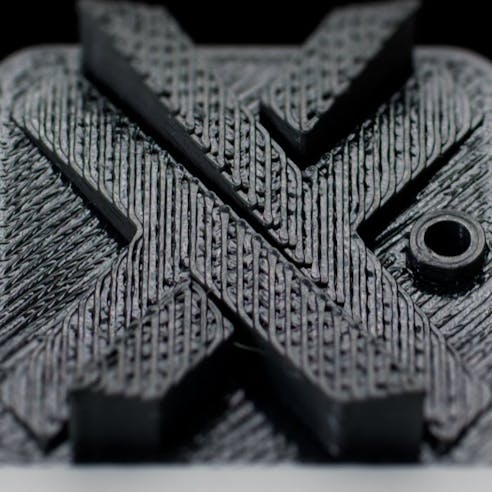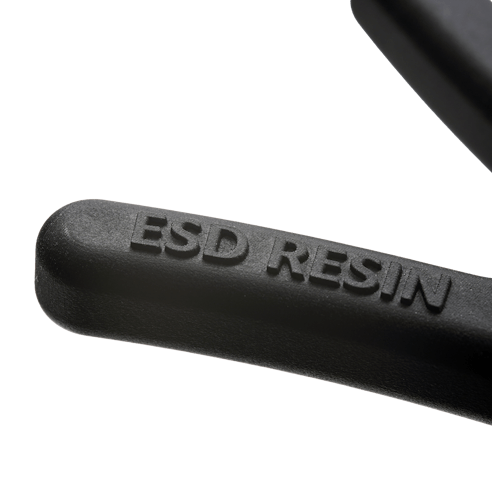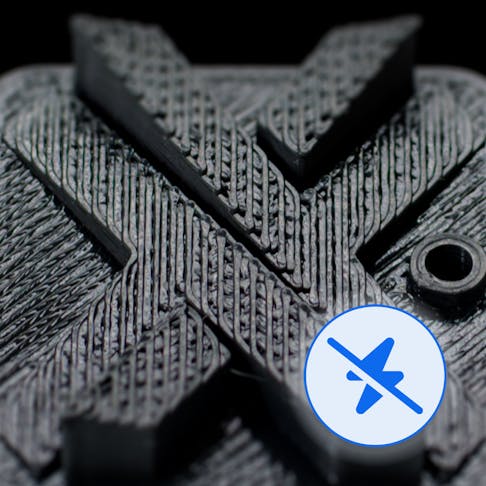What Are ESD Materials?
Electrostatic dissipative materials, or ESD materials, are designed to control and mitigate the buildup and discharge of static electricity. ESD materials for 3D printing are formulated with additives that impart electrical properties suitable for dissipating static charges. Additives such as carbon nanotubes or black carbon powders are typically incorporated into the base polymer used for 3D printing. As such, it is possible to have both static dissipative and non-static dissipative variants of the same material.
Usefulness of ESD Materials
Unlike insulators which store electric charges and prevent their flow, or conductors, which ease the flow of electricity, ESD materials have properties that help to dissipate static charges in a controlled manner. These dissipative properties mean it becomes more difficult for an electric charge to build up to the point where a static discharge may occur. Static electricity can damage sensitive electronic components or be hazardous in specific environments, such as those with explosive gases, liquids, or dust. As such, mitigating the risk of static discharges is often a critical aspect of a product's design. ESD materials are essential in electronics and semiconductor manufacturing, aerospace, and explosive handling industries.

Electrical probe holder made from Formlabs ESD resin.
Available ESD Options for 3D Printed Materials
Filament, resin, and powder-based materials can all be made to be electrostatic dissipative. It's important to note that while some materials contain carbon additives, such as carbon-filled materials, that does not necessarily make them electrostatic dissipative. Additionally, materials that are rated as ESD-safe can vary in their electrostatic resistance. Therefore, you should carefully review technical specifications and material properties when searching for a suitable option for your project.
At Xometry, we make it easy to select, quote, and order custom 3D-printed parts made from ESD-rated materials. In the sections below, we will examine our primary options: ABS-ESD7 and Formlabs ESD Resin.
ABS-ESD7
ABS-ESD7™ (acrylonitrile butadiene styrene-electrostatic dissipative) is a type of ABS thermoplastic infused with a carbon filler to make it static dissipative. Much like its non-ESD counterpart, it is a great general-purpose material with good strength and mechanical properties. It's ideal for applications such as electronic housings and creating fixtures for electronic components. ABS-ESD7 is available for instant quoting in the Fused Deposition Modeling (FDM) printing process, enabling you to efficiently create large parts up to 24"x36"x36" at a relatively low cost.

| Tensile Strength (MPa) | Elongation at Break (%) | Hardness (Rockwell) | Heat Deflection Temperature (℃) | Surface Resistance | Data Sheet |
|---|---|---|---|---|---|
Tensile Strength (MPa) 35.4 | Elongation at Break (%) 3.4 | Hardness (Rockwell) 109.5 | Heat Deflection Temperature (℃) 101.4° | Surface Resistance 10^6 Ω - 10^9 Ω | Data Sheet |
Learn about and see more materials on our FDM capabilities page.

Formlabs ESD Resin
Formlabs ESD is an engineered resin that creates cost-effective prototypes and end-use parts. Its material properties make it suitable for small electronic device tooling, jigs, fixtures, and housings. Since the material is printed using our Stereolithography (SLA) service, you can expect high-resolution parts with superior details and surface finish. This material instantly quotes in the Xometry Instant Quoting Engine®, allowing for fast procurement of custom ESD-safe components.

| Tensile Strength (MPa) | Elongation at Break (%) | Hardness | Heat Deflection Temperature (℃) | Surface Resistance | Data Sheet |
|---|---|---|---|---|---|
Tensile Strength (MPa) 44.2 | Elongation at Break (%) 12 | Hardness 90 Shore D | Heat Deflection Temperature (℃) 54.2° | Surface Resistance 10^5 Ω - 10^8 Ω | Data Sheet |
Learn about and see more materials on our SLA capabilities page.
How Xometry Can Help
Xometry makes it easy to quote and order custom parts made from electrostatic dissipative materials like ABS-ESD7 and Formlabs ESD. These materials are excellent choices for parts where mitigating static discharge is essential. Electronic housings, fixtures, connectors, and other components can all benefit from ESD-safe materials. The most suitable option for your application will depend on factors such as part size, resolution requirements, order quantity, and cost.
Visit the Xometry Instant Quoting Engine® for an instant quote on your ESD-safe components today!

